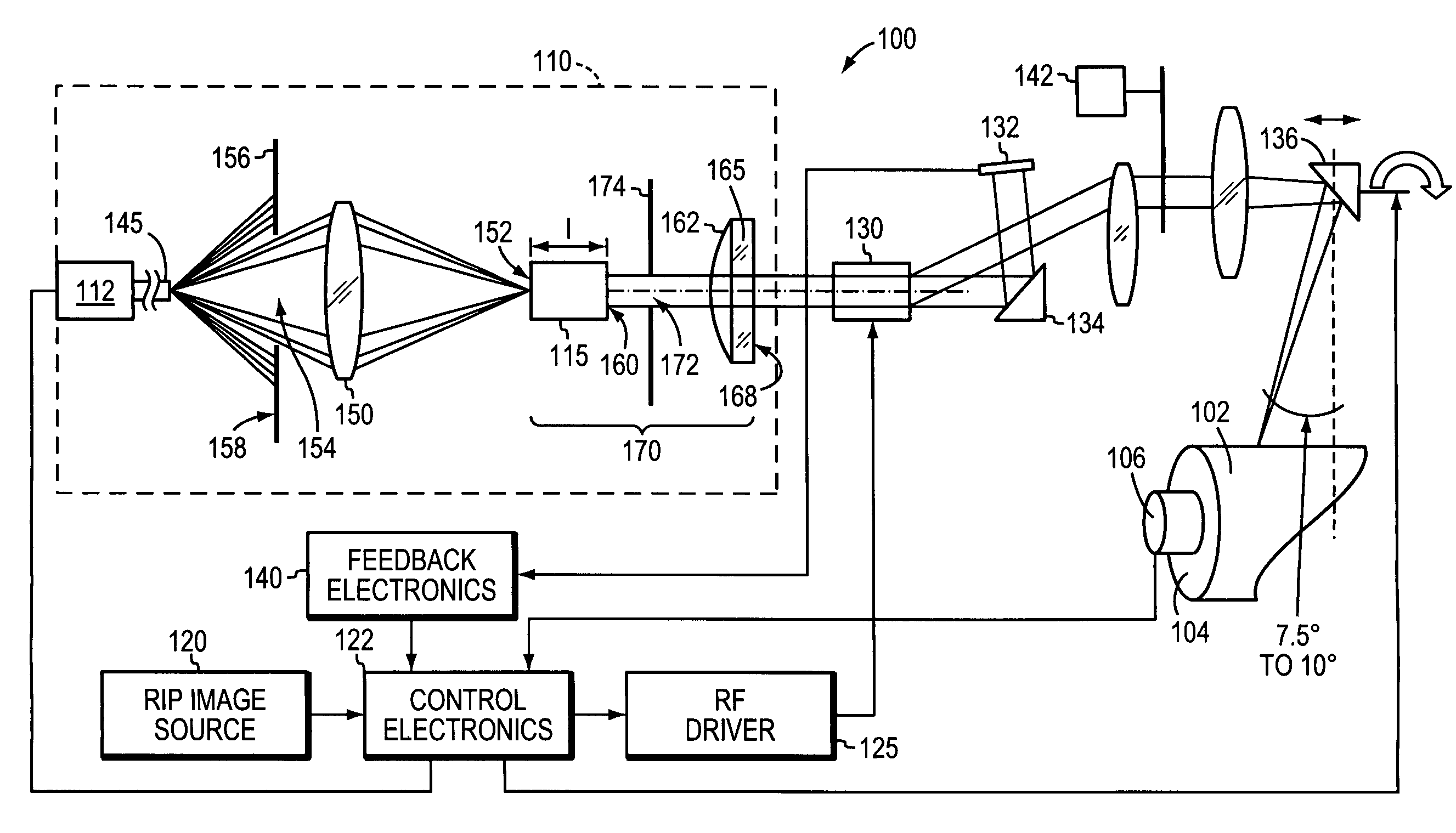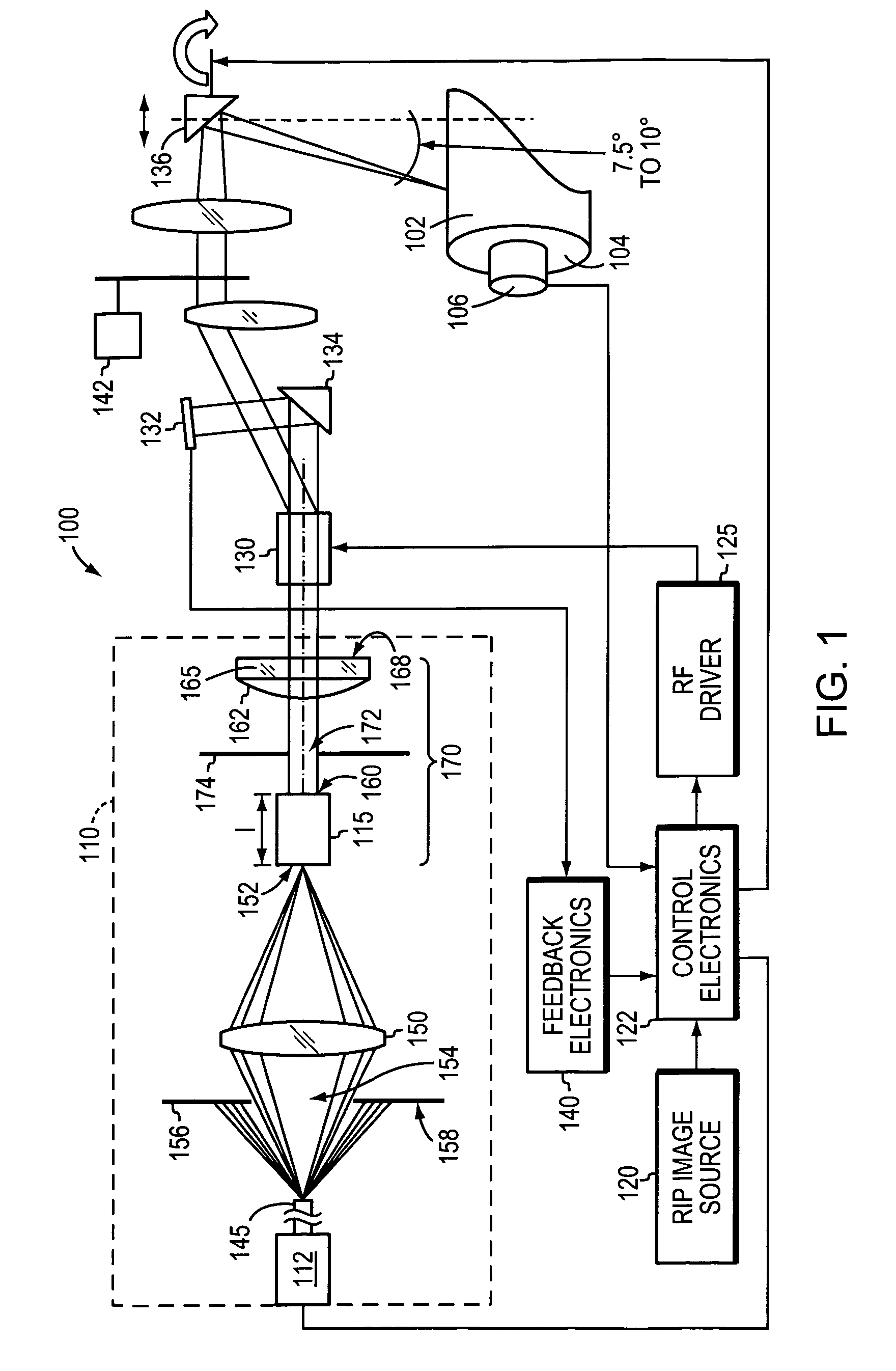Graphic-arts laser imaging with reduced-length laser cavities and improved performance
a laser cavity and laser technology, applied in thermography, manufacturing tools, active medium materials, etc., can solve the problems of reducing the desired image quality, reducing the offset angle, and affecting the operation of the laser, so as to reduce the amount of bulk tensing, and improve the effect of laser operation
- Summary
- Abstract
- Description
- Claims
- Application Information
AI Technical Summary
Benefits of technology
Problems solved by technology
Method used
Image
Examples
Embodiment Construction
[0024]Unless otherwise specified, the illustrated embodiment can be understood as providing exemplary features of varying detail of certain embodiments, and therefore, unless otherwise specified, features, components, processes, modules, data elements, and / or aspects of the illustrations can be otherwise combined, interconnected, sequenced, separated, interchanged, and / or rearranged without departing from the disclosed systems or methods. Additionally, the shapes and sizes of components are also exemplary and unless otherwise specified, can be altered without affecting the disclosed technology.
[0025]For the purposes of this disclosure, the term “substantially” is to be broadly construed to indicate a precise relationship, condition, arrangement, orientation, and / or other characteristic, as well as, deviations thereof as understood by one of ordinary skill in the art, to the extent that such deviations do not materially affect the disclosed methods and systems.
[0026]In one illustrati...
PUM
| Property | Measurement | Unit |
|---|---|---|
| diameter | aaaaa | aaaaa |
| diameter | aaaaa | aaaaa |
| length | aaaaa | aaaaa |
Abstract
Description
Claims
Application Information
 Login to View More
Login to View More - R&D
- Intellectual Property
- Life Sciences
- Materials
- Tech Scout
- Unparalleled Data Quality
- Higher Quality Content
- 60% Fewer Hallucinations
Browse by: Latest US Patents, China's latest patents, Technical Efficacy Thesaurus, Application Domain, Technology Topic, Popular Technical Reports.
© 2025 PatSnap. All rights reserved.Legal|Privacy policy|Modern Slavery Act Transparency Statement|Sitemap|About US| Contact US: help@patsnap.com



